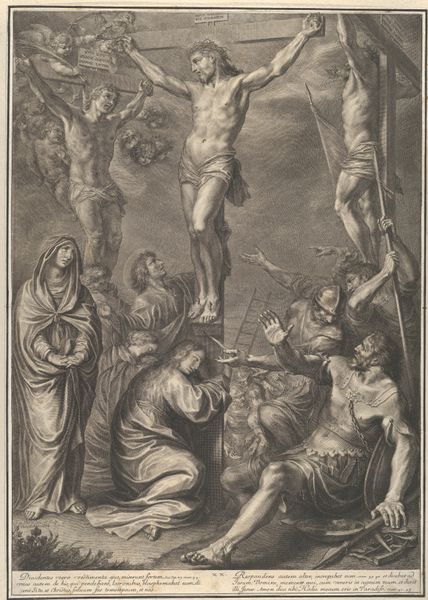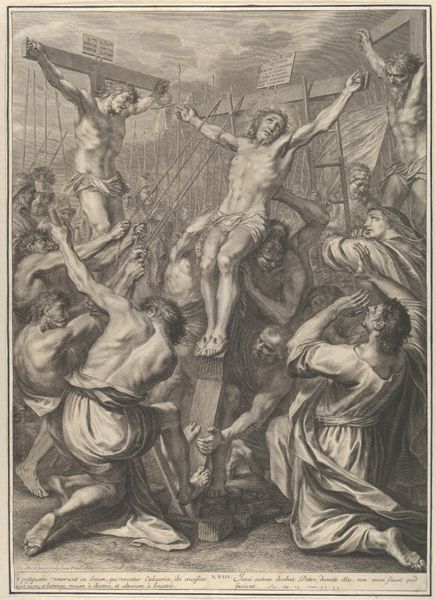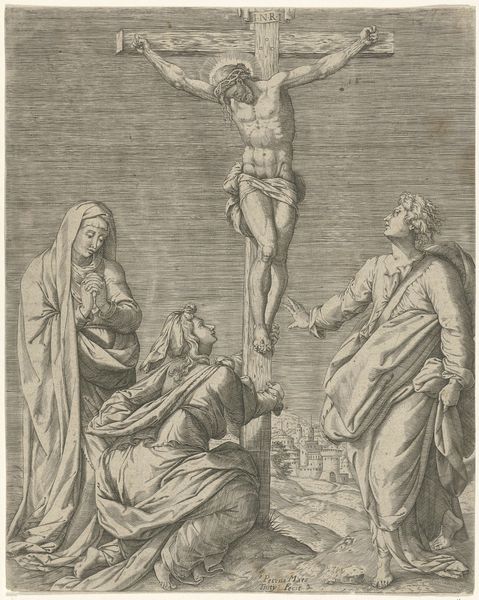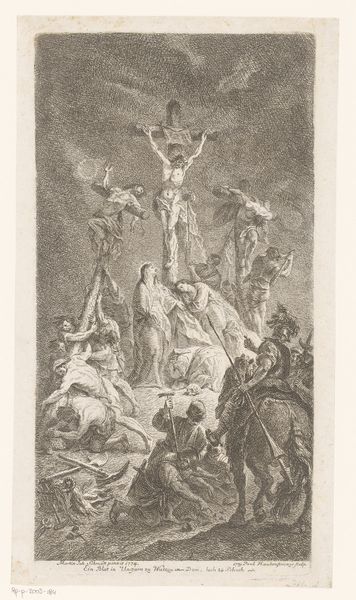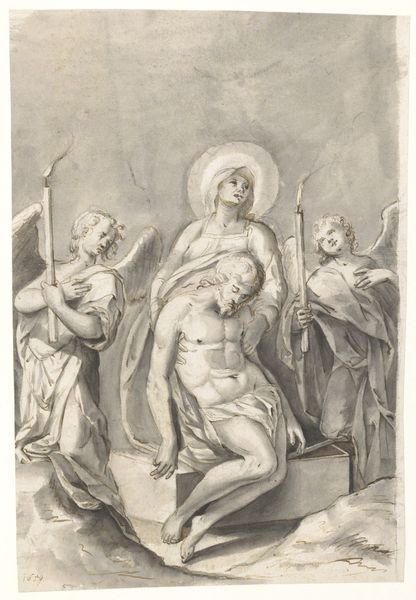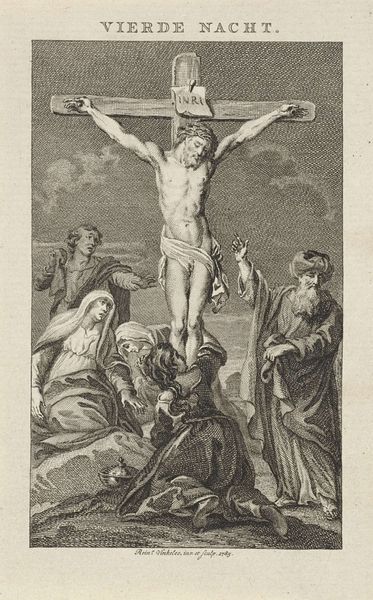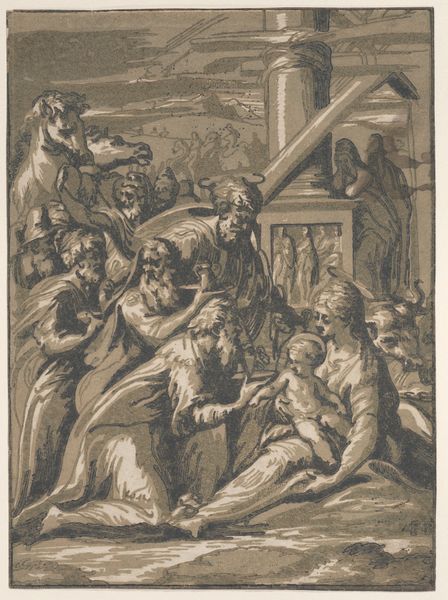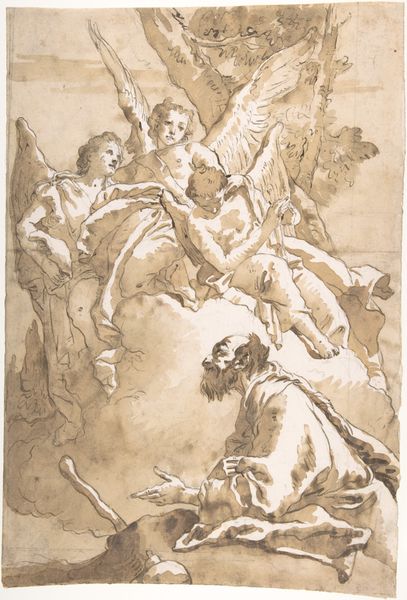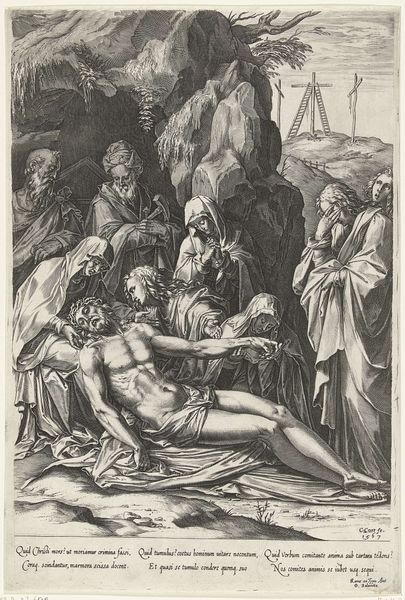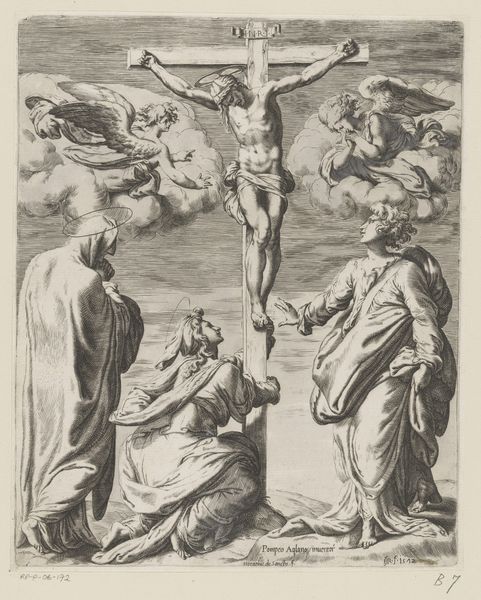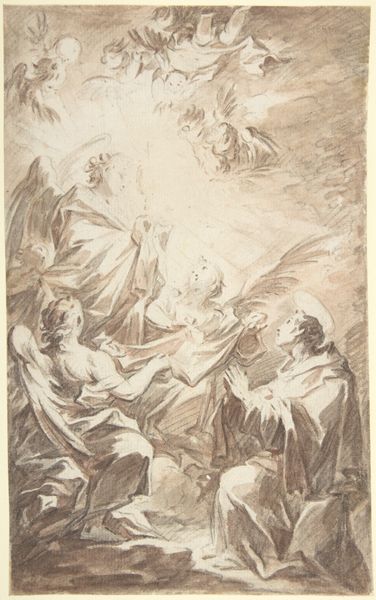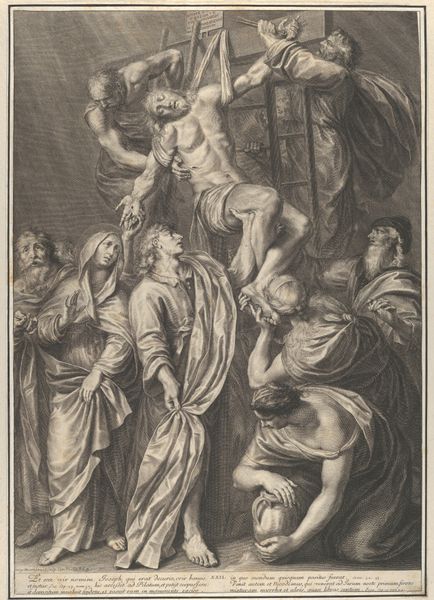
drawing, pencil, charcoal
#
portrait
#
drawing
#
pencil sketch
#
landscape
#
charcoal drawing
#
figuration
#
11_renaissance
#
pencil drawing
#
pencil
#
crucifixion
#
charcoal
#
history-painting
#
italian-renaissance
#
christ
Dimensions: 16-1/4 x 10-3/8 in. (41.3 x 26.4 cm)
Copyright: Public Domain
Editor: This drawing is titled "The Crucifixion of Christ" by Hans Speckaert, dating back to sometime between 1560 and 1577. It's done in pencil and charcoal. I am immediately drawn to the contrast between the detailed figures and the more gestural background. What strikes you most about the composition? Curator: The artist's skillful manipulation of line and form commands immediate attention. Note how the strong verticals of the crosses create a structural framework. Observe how within that framework the figures are carefully arranged in a pyramidal composition. Editor: Yes, I see how the central Christ figure draws your eye upward, stabilized by those vertical crosses on either side! How does this particular arrangement impact the overall feeling of the piece? Curator: Precisely. The ascending lines direct the gaze heavenward, but that formal arrangement contains a very human element. Consider how the artist renders the textures, the soft drapery, or even the musculature of the figures. The interplay of light and shadow accentuates their volume. We might consider the use of chiaroscuro a tool the artist uses to direct our attention. Editor: So it's a calculated effect, directing our focus, emphasizing certain figures and forms through contrast? Curator: Absolutely. The very composition echoes the themes of ascension and suffering in an innovative combination of form and figure. What does this dialogue between artistic intention and interpretation reveal to you? Editor: I hadn't considered the pyramidal composition mirroring themes within the content, using light and dark to create both visual and emotional depth. I now see the value in examining beyond subject, studying lines, forms and balance in composition. Curator: Indeed. Formal analysis provides us tools to analyze what gives a work its enduring power.
Comments
No comments
Be the first to comment and join the conversation on the ultimate creative platform.
